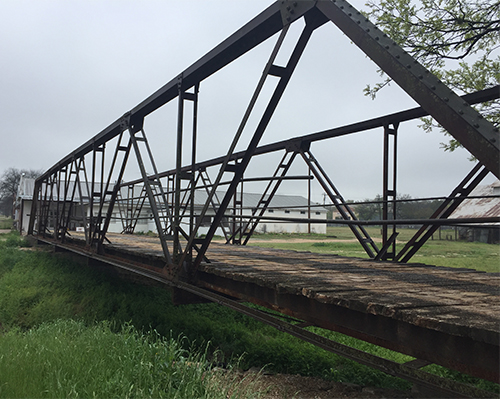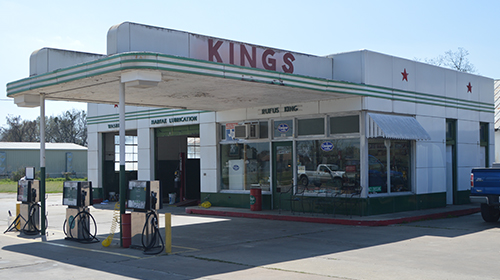One of the most important jobs within the Texas Department of Transportation (TxDOT) is perhaps the least known — but the job could have a huge bearing on what we know, or could discover, about Texas and our past.
Rebekah Dobrasko is one of five historic preservation specialists at TxDOT, working in the agency's Environmental Affairs Division alongside ten staff archeologists. You are probably familiar with the duties of an archeologist: they're famous for discovering and preserving artifacts related to humans. While archeologists do a lot of work below the ground, historic preservation specialists spend most of their time above ground.

"Before TxDOT builds or expands a roadway, we help determine how that work could impact a historic building, a historic farm or landscape, cemeteries, historic bridges, or historic districts," Dobrasko explains. "Our goal is to preserve and document our cultural heritage through an investigation that's designed to discover everything we can about that property." | View TxDOT Video: Cultural Resource Management: Bridging the Past and Present
For the I-35 expansion project at Salado, TxDOT historians worked with engineers to ensure the highway did not adversely impact both the historic Stagecoach Inn and the Robinson Plantation, which are located across the highway from each other.
"While I was going to school at Tulane University in New Orleans, I became fascinated with history and old buildings — it still is a big issue for the community. That's when I knew I wanted to become a historic preservation specialist."

About six years ago, Dobrasko wanted to move to Texas to be close to family. When she discovered a job opening at TxDOT for a historic preservation specialist, the rest, as they say, was history.
"I feel like this job allows me to make a real difference," she says. "Discovering how people lived and documenting those things is incredibly satisfying."
One of those most recent satisfying projects was her work helping tell the story of Ransom Williams and his family farm. The former slave bought a 45-acre farm in Travis County in 1871. TxDOT archeologists excavated the property in advance of a planned road construction. Read more about the Farmstead here, and listen to Dobrasko conduct interviews with archeologists about their work.
Dobrasko helped develop an exhibit at the Bullock State History Museum using artifacts from the Ransom Williams farmstead. Visitors will be able to see a branding iron from Williams' farm as well as dishes and toys used by his family.
Dobrosko has worked on numerous other memorable projects, including the documentation of historic gas stations, and the preservation of community bridges. | View Video of the Hamilton County bridge restoration project
"In my job, I serve as a subject matter expert for the National Historic Preservation Act of 1966, which is designed to preserve historic and archeological sites," Dobrosko says. "Texas has such a rich history with all kinds of untold stories. I consider it my duty and commitment to make sure those stories are discovered and shared."
Jake Smith
I-35 Public Information Officer
254-867-2705
Contact My35